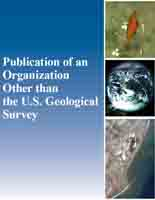Federal, State, and local water quality managers charged with restoring the Chesapeake Bay ecosystem require tools to maximize the impact of their limited resources. To address this need, the U.S. Geological Survey (USGS) and the Environmental Protection Agency's Chesapeake Bay Program (CBP) are developing a suite of Web-based tools called the Chesapeake Online Assessment Support Toolkit (COAST). The goal of COAST is to help CBP partners identify geographic areas where restoration activities would have the greatest effect, select the appropriate management strategies, and improve coordination and prioritization among partners. As part of the COAST suite of tools focused on environmental restoration, a water quality management visualization component called the Nutrient Yields Mapper (NYM) tool is being developed by USGS. The NYM tool is a web application that uses watershed yield estimates from USGS SPAtially Referenced Regressions On Watershed (SPARROW) attributes model (Schwarz et al., 2006) [6] to allow water quality managers to identify important sources of nitrogen and phosphorous within the Chesapeake Bay watershed. The NYM tool utilizes new open source technologies that have become popular in geospatial web development, including components such as OpenLayers and GeoServer. This paper presents examples of water quality data analysis based on nutrient type, source, yield, and area of interest using the NYM tool for the Chesapeake Bay watershed. In addition, we describe examples of map-based techniques for identifying high and low nutrient yield areas; web map engines; and data visualization and data management techniques.


